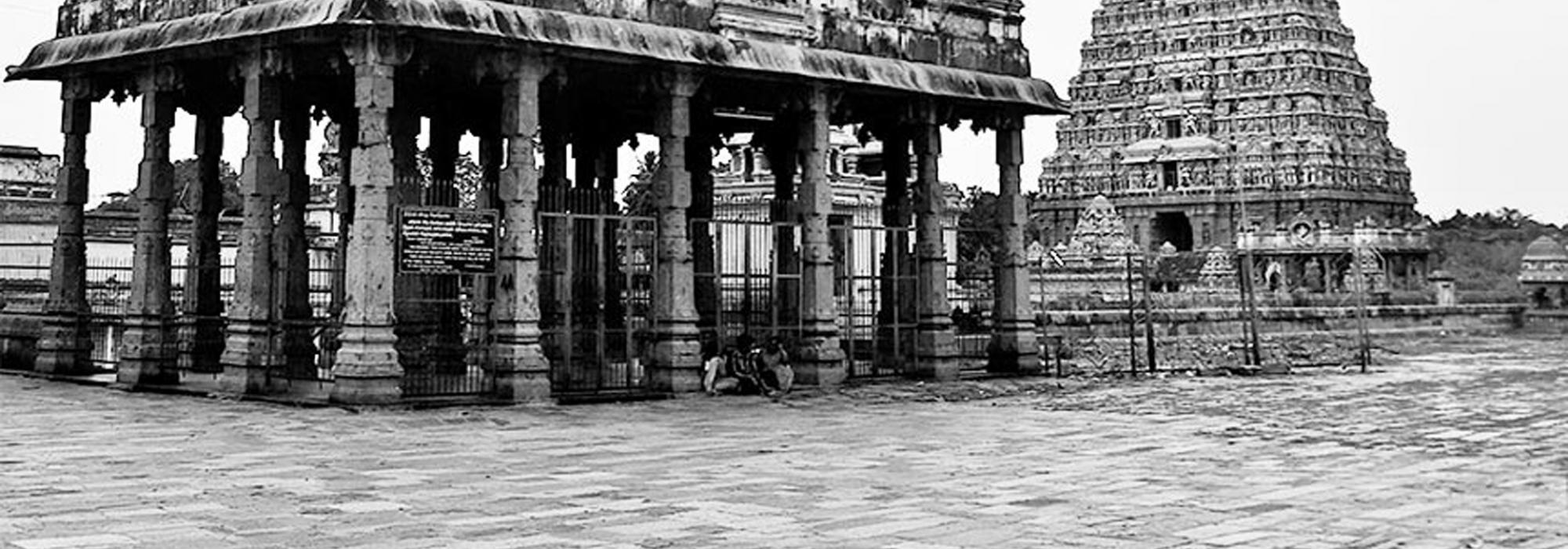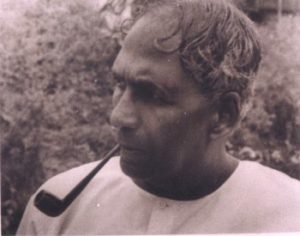[This paper was submitted to the Swadeshi Indology Conference held in Chennai (December 2017)]
Dr. B G L Swamy
Bangalore Gundappa Lakshminarayana Swamy, (5.2.1916–2.11.1980) also known as B G L Swamy, was a botanist of international repute. He was a post-doctoral fellow at Harvard University for eight years, working under the guidance of Prof. Irving Bailey. Swamy's primary research area was plant anatomy, particularly the structure of connections between a plant’s root and stem. He discovered a few plant species that were hitherto unknown, such as Ascarina Maheshwarii and Sarcandra Irvingbaileyi, named after his teachers. He was the son of D V Gundappa, one of the most respected Indian writers and philosophers. Swamy was a polyglot proficient in Kannada, Telugu, Tamil, Sanskrit, Latin, French, German, and Spanish. He translated the compositions of Saint Purandaradāsa in the same poetic meter into Tamil. His findings on Vedic plants (Soma, specifically), plant-based addictions, plant taxonomy, migration of fruits and plants, and plants mentioned in classical Indian literature are invaluable contributions to their respective fields. These are recorded in many books that he authored in Kannada, such as Hasuru Honnu, which won the Central Sahitya Akademi award in 1978, Sākṣātkārada Hādiyalli, Phalaśruti, and Namma Hoṭṭeyalli Dakṣiṇa America. He authored a book on the temple of Chidambaram in which he traced the migration of śaivism from Kashmir to Tamil Nadu – an argument that challenges the Aryan-Dravidian divide. He was a gifted cartoonist, violinist, and epigraphist. He had an abiding interest in history, chiefly concerning the literary and social histories of Tamil Nadu and Karnataka. His book Tamiḻu Talegaḻa Naḍuve and numerous academic papers record his observations on history. Kālejuraṅga, Kālejutaraṅga, and Prādhyāpakana Pīṭhadalli are some of his works that outline the academic frauds perpetrated in Tamil Nadu due to political influence. All his writings are spiced with lively humour.
Dr. B G L Swamy contributed to the Dravidian discourse by writing on the Tevāram trio (Swamy 1975), Tolkappiyam (Swamy 1975), Kalabhra interregnum (Swamy 1976), and Sangam poetry (Swamy 2013). In the process he dismantled many arguments concerning the Aryan-Dravidian divide.
He discussed the date of Tolkāppiyam by considering the following: time of appearance of Tamil script, period of infiltration of Sanskrit into South India, mythological episodes, peculiarities of grammar and usage in the text, and references to social customs in the text. Rubbishing the claim made by Ilakkuvanar (Ilakkuvanar 1963) that Tolkāppiyam was written in the seventh century BCE, Dr. Swamy remarked about the singular lack of evidence to highlight the impact of the text on Tamil literature till the beginning of the Common Era. He observed:
“In general, it is the existing conventions and usages that later become subjected to codification or systematization. Language and literature are no exceptions to this sequence. In other words, a grammar for a language cannot arise out of nothingness. Furthermore, the necessity for a grammar becomes obligate usually when a language, during its successive stages of growth, acquires either a notorious heterogeneity of usage or an unmanageable variety of communicative idiom or a cumbersome admixture of influences from neighbouring or extraneous sources; it is also likely that an opportunity for formulating laws is occasioned by a ‘fear’ of the loss of purity of a language. Revising the existing grammars, adding emendations and writing commentaries or glosses for their elucidation, are normal and necessary adjuncts of any proliferating language.”
(Swamy 1975: 296)
Repeated attempts have been made to delink Tamil from Sanskrit, not just at the level of language but also at the level of culture. Speaking of this, Dr. Swamy observed that at the stage when the South Indian dialects came to be written, we see an incipient impact of Sanskrit and Prakrit, but the impact became progressively pronounced with the dialects being employed for administrative and literary purposes. This is supported by the fact that the cave-inscriptions found in the Tamil country, which date back to third century BCE, contain a good proportion of Prakrit words (Subramaniam 1957). The case is no different with Telugu (Venkatavadhani 1960) and Kannada (Narasimhacharya 1940).
In the introductory portion of Tolkāppiyam, Dr. Swamy observed, it is said, “aindiraṃ nirainda tolkāppiyam,” which clearly indicates that it is a text based on Aindra-vyākaraṇa, which has undeniable Sanskrit roots. The text also mentions naḍu kal, ‘hero-stones.’ It outlines the different stages in erecting such a stone (Tolkāppiyam, 3.60) and refers to the writing engraved on the stone that eulogizes the bravery of the person involved. The earliest hero-stones that have been discovered belong to eight century CE and so the author of Tolkāppiyam certainly cannot be placed in an anterior period, Dr. Swamy argued. He further explained that these monuments are wholly absent in typical Tamil regions—Coḻa, Cera, and Pāṇḍya confines—excepting the border areas that were constantly changing hands with the ruling dynasties of the north. This circumscribes the topology of the composition or, at least, suggests that the author belonged to an area where the custom of erection of hero-stones was in vogue.
Five commentaries on the text were composed during thirteenth century CE. The composition of the actual text could not have been far-removed from this period. Further, the legends endeavouring to place the text in ancient centuries were themselves composed only in the age of its commentaries, Dr. Swamy argued. He drew attention to the all-round literary development throughout south India in the eleventh and twelfth centuries (CE) due to the influence of revivalist religious movements—Bauddha and Jaina—and their interaction with the existing faiths. It was in this period that Sanskrit assumed an equal status among the Dravidian languages and contributed its notable share of knowledge. The cultural data depicted in Tolkāppiyam is of such a kind that the period of its authorship can be homogeneously fitted into the cultural matrix of the earlier centuries of the medieval period. This positions the text at tenth century CE, he concluded.
Writing about Sangam literature, Dr. Swamy observed that the word ‘saṅgham’ (saṅga>caṅka) was originally the Sanskrit word ‘saṅkalana’ – anthology. Most of the works on sūkti in Sanskrit and Prakrit are basically anthologies – Subhāṣitaratnakośa, Subhāṣitāvali, Sūktimuktāvali, Saduktikarṇāmṛta etc. It is also interesting to note that the classification agaṃ and puraṃ in Tamil are nothing but śṛṅgāra and vīra rasas seen in Sanskrit texts. One can also observe the stark similarities between Sangam texts and Sanskrit and Prakrit works such as Amaruśatakam, Gāhāsattasaī, and Vajjālagga. The figures of speech, poetic conventions, types of heroes and heroines, ālambana and uddīpana vibhāva-s are all essentially aligned with the Sanskrit tradition inspired by Bharata (Ganesh 2005: 92-102). There are copious references to the Vedas, Rāmāyaṇa, and Mahābhārata in Sangam literature (Malhotra 2011: 431-437). We do not find even a single instance in the whole of Sangam literature that is against the spirit of sanātana-dharma.
There have been varied opinions regarding the period of Śilappadikāram. While the popular view assigns it to second century CE, there have been people arguing to place it in timelines as distant as second century BCE (Arokiasamy 1967) and eighth century CE. Dr. Swamy showed that Śilappadikāram employs the campū style, a mixture of prose and verse. This genre of literature surfaced around the ninth century CE and developed in languages such as Sanskrit and Kannada around tenth century CE. Most of the campū works in Kannada are composed by Jaina poets. It is a historical fact that there was widespread religious activity of Jains in Karnataka and Tamil Nadu during ninth and eleventh centuries (CE) and cultural exchange between the two states was never unheard of. Seen in this light, Śilappadikāram must have been composed around tenth century CE (Swamy 2013: 66).
Dr. Swamy’s dating of Tolkāppiyam and Śilappadikāram could be challenged and they may be pushed back by a few centuries, but his fundamental argument that they cannot be assigned to a period before the Common Era is unquestionable. His references to hero-stones and saṅkalana are insightful. Going by the nature of urban life as depicted in these texts and considering the mercenary and mercantile activities of ancient times, it is safe to assign them to the later classical period, toward the end of the Gupta age, and the early medieval period, which dates back to the end of sixth century CE.
Conclusion
The writings of Prof. S. Srikanta Sastri, Vidvān Sediyapu Krishna Bhat, and Dr. B G L Swamy present a wealth of evidence to debunk the Aryan-Dravidian theory. These three scholars had a deep understanding of original Sanskrit texts and hence their observations are authentic, reliable, and authoritative. With the academia the world over developing a propensity to pander to western needs and ignore indigenous views, the writings of many scholars are yet to be taken seriously. For instance, the literature produced by towering scholars such as Vasudev Sharan Agrawala, Buddha Prakash, Shripad Damodar Satwalekar, and Vishva Bandhu is far from entering the mainstream; it is yet to be critically examined. Sufficient work has been done on the said issue in every regional language of India and such literature has to be traced, studied, and supplemented, if need be, in the light of modern research. This paper is but a small step in that direction.
Bibliography
- Whitney, William Dwight. Language and the Study of Language. London: N. Trubner and Co., Ludgate Hill, 1884.
- Aryans. Bharatiya Vidya, Vol. 3. Bombay: Bharatiya Vidya Bhavan, 1947.
- Datta, B. N. The Origin of the Aryans. Hindustan Review, 1942. p.361.
- Śrīkaṇṭhayāna: Collected Papers of Dr. S. Srikanta Sastri, Vol. 1. Bengaluru: The Mythic Society, 2016. p.10.
- Zimmermann, R. Hymns from the Rgveda. New Delhi: Bharatiya Kala Prakashan, 2004
- Risley, Herbert. The People of India. London. W. Thacker and Co., 1915.
- Haddon, A. C. The Races of Man and their Distribution. New York. F A Stokes Co., 1909.
- Dixon, Roland B. The Racial History of Man. New York: Charles Scribner’s Sons, 1923.
- Sastri, Srikanta S. India, the original home of Aryans. The History and Culture of the Indian People, Vol. 1. Bombay: Bharatiya Vidya Bhavan, 2010. pp. 220-221.
- Sastri, Srikanta S. Proto Indic Religion. QJMS, Vol. 32. Bangalore: The Mythic Society, 1941.
- Vṛṣākapi. K M Munshi Diamond Jubilee Commemoration Volume, Bharatiya Vidya, Vol. 10. Bombay: Bharatiya Vidya Bhavan, 1951.
- Wakankar, V. S. Indian Prehistory as Revealed by Excavations, Explorations and Rock Art Study at Bhimbetka and in the Adjoining Regions. Purakala, 2008.
- Bhat, Sediyapu Krishna. Sediyapu Chandassamputa. Udupi: Rashtrakavi Govind Pai Samshodhana Kendra, 2006.
- Krishna Bhat, Sediyapu. Tathyadarśana. Udupi: Rashtrakavi Govinda Pai Samshodhana Kendra, 1997.
- Caldwell, Robert. A Comparative Grammar of the Dravidian or South-Indian Family of Languages. London: Trubner and Co., Ludgate Hill, 1875.
- Swamy, B G L. The Date of the Tevāram Trio – An Analysis and Reappraisal. Madras: Bulletin of the Institute of Traditional Cultures, 1975.
- Swamy, B G L. The Date of Tolkāppiyam – A Retrospect. Annals of Oriental Research, 1975.
- Swamy, B G L. Kalabhra Interregnum – A Retrospect and Prospect. Madras: Bulletin of the Institute of Traditional Cultures, 20.1, 1976.
- Swamy, B G L. Tamiḻu Talegaḻa Naḍuve. Mysore: Kavyalaya Publishers, 2013.
- Ilakkuvanar, S. Tolkāppiyam in English with Critical Studies. Madurai: Kural Neri Publishing House, 1963.
- Subramaniam, T N. South Indian Temple Inscriptions, Vol. 3, Part 2. Madras, 1957.
- Venkatavadhani, D. Āndhra Vāṅgmayārambhadaśa, Vol. 1. Hyderabad, 1960.
- Narasimhacharya, R. History of Kannada Literature. Mysore: 1940
- Ganesh, R. Bhāṣābhṛṅgada Benneri. Bangalore: Vasanta Prakashana, 2005. pp. 92-102.
- Malhotra, Rajiv and Neelakandan, Aravindan. Breaking India: Western Interventions in Dravidian and Dalit Faultlines. New Delhi: Amaryllis, 2011. pp. 431-437.
- Arokiasamy, M. The Classical Age of Tamils. Madras, 1967.

















































